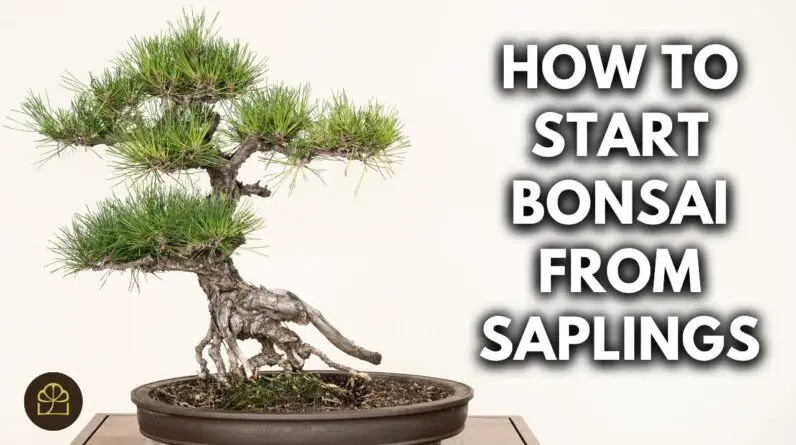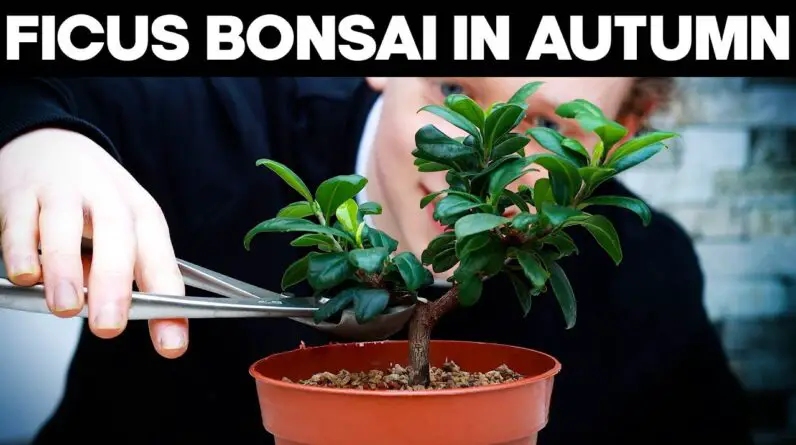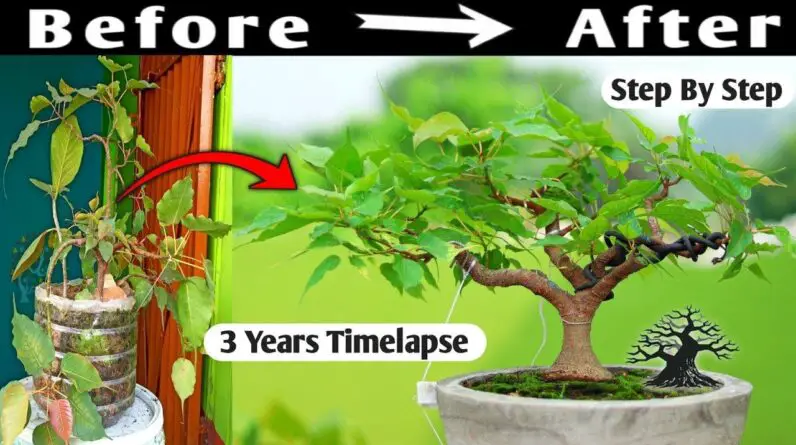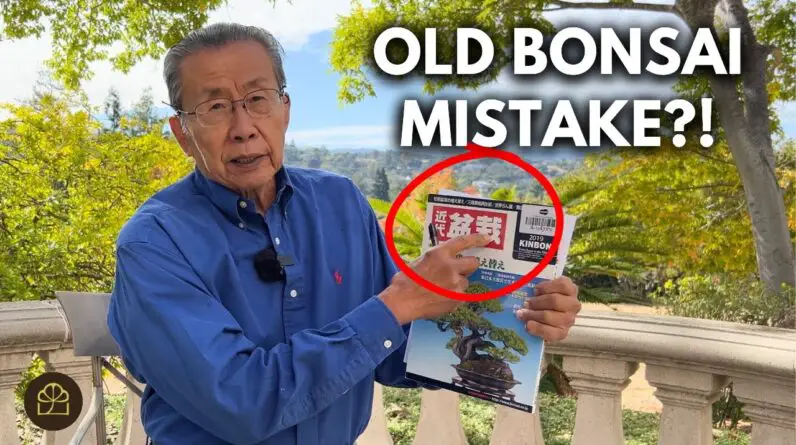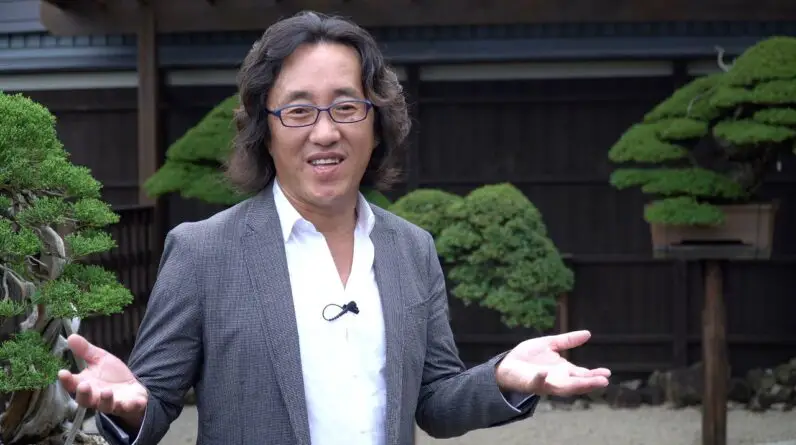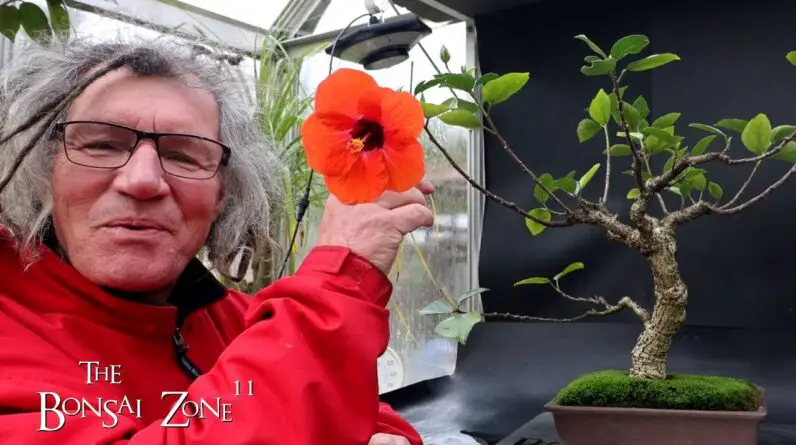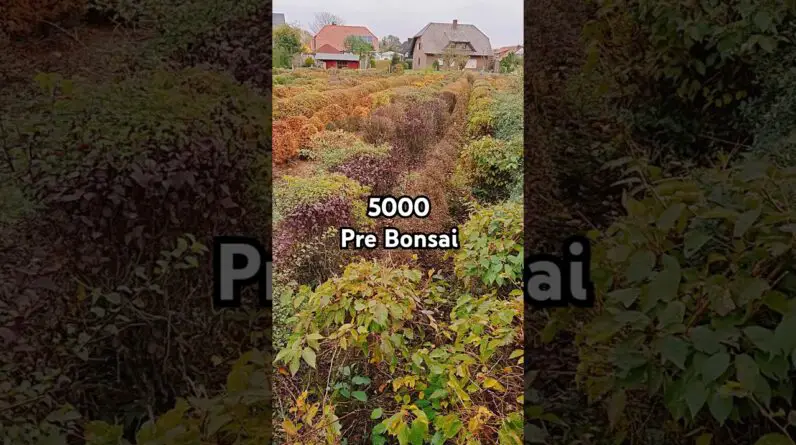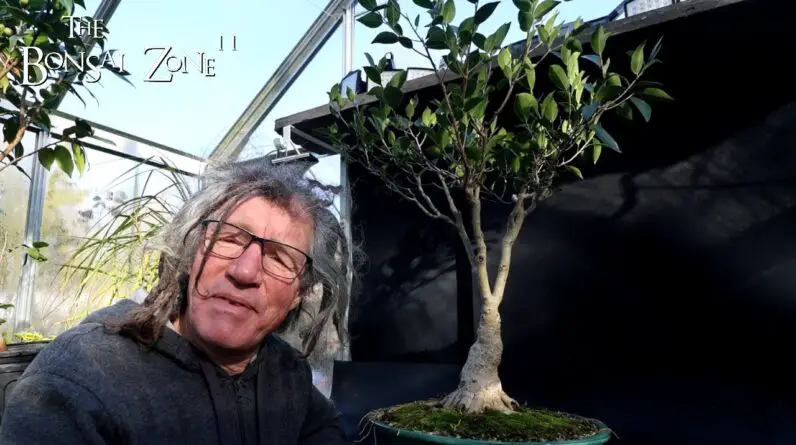Intend to discover how to make an Apple bonsai tree? In this video by Bonsai Realm, they show you how to trim and wire an Apple tree that is around 15 years of ages. The video was filmed throughout fall, when the tree was full of small apple trees.
Bonsai Empire is passionate regarding sharing the living art of Bonsai and developed this do it yourself tutorial to assist and influence beginners. This video clip belongs to their on-line training courses, but they offer numerous various other complimentary video clips also.
So if you want discovering more concerning Bonsai methods, head over to Bonsai Realm’s site!
In the video, they describe the process of pruning and wiring this Apple bonsai tree. They utilize tiny pruning shears, pliers, and cord cutters. The top branch is the initial to be trimmed, and then they concentrate on 2 thicker branches to achieve the preferred shape.
They show the relevance of a 360-degree method when trimming and electrical wiring to prevent any kind of dead angles. After the pruning and wiring, the tree looks more polished and well balanced. With routine maintenance, this tree will remain to flourish and grow new branches in the upcoming spring. If you intend to discover more regarding pruning, wiring, and repotting methods, think about signing up with Bonsai Empire’s online courses and gain access to professional assistance and the opportunity to ask the teachers concerns straight.
Apple Bonsai Tree: An Introduction
Invite to the world of apple bonsai trees! Developing and cultivating a mini apple tree can be a satisfying and meeting hobby. Not only do these bonsai trees provide a beautiful aesthetic, yet they likewise provide the opportunity to expand your very own fruits in a tiny and manageable room.
In this thorough write-up, we will certainly guide you through the process of choosing the best apple tree selection, gathering the needed products, expanding the tree from seeds, trimming and electrical wiring strategies, appropriate maintenance, potting factors to consider, and the distinctions in between outside and indoor apple bonsai trees.
Consider the Size of the Bonsai
When selecting an apple tree variety for bonsai farming, it is necessary to think about the best size of the tree. Given that bonsai trees are meant to be miniature versions of their larger counterparts, picking a variety that naturally stays tiny is important. Try to find apple tree ranges that are understood for their small growth and smaller sized stature, such as columnar apple trees or naturally dwarf varieties. This will certainly make certain that your bonsai stays symmetrical and is less complicated to handle.
Select a Crab Apple Tree Range
Crab apple trees, with their small and lively fruits, are frequently the favored option for apple bonsai farming. These trees normally have a lot more fragile and symmetrical features, making them fit for bonsai appearance. Furthermore, crab apple trees are durable and versatile, making them easier to take care of and maintain as bonsai samplings. Take into consideration varieties such as Malus sylvestris or Malus floribunda, which are typically made use of in bonsai farming.
Consider the Environment and Place
Prior to choosing the apple tree variety for your bonsai, it’s important to take into consideration the environment and place where you plan to expand it. Various apple tree varieties prosper in various climates, so choose a variety that is well-suited to your details region. Additionally, remember the quantity of sunshine and temperature level needs of the picked variety. Many apple trees require full sunlight to grow, so guarantee that your selected place supplies adequate sunlight throughout the day.
Select an Ideal Bonsai Pot
Selecting the right bonsai pot is crucial for the health and appearances of your apple bonsai tree. Seek a pot that is proportionate to the size of your tree and complements its overall design. Bonsai pots are available in different products such as ceramic, plastic, or clay. Each material has its very own advantages and factors to consider, so select one that fits your personal choices and the particular needs of your apple bonsai tree.
Obtain Quality Bonsai Dirt
Top notch bonsai soil is vital for the healthy development of your apple bonsai tree. The dirt must provide sufficient drain while retaining sufficient wetness for the tree’s roots. You can purchase pre-made bonsai dirt mixes that are especially developed for bonsai growing, or you can produce your own mix by integrating elements such as Akadama, pumice, and lava rock. Trial and error with different dirt combinations may be required to find the suitable balance for your apple bonsai tree.
Get Trimming and Circuitry Tools
Trimming and circuitry are necessary strategies for forming and keeping the kind of your apple bonsai tree. To properly trim and wire your bonsai, you will certainly require a collection of appropriate tools. Some vital tools consist of a scooped branch cutter for accurate trimming, bonsai wire cutters for taking care of the cable, and pliers or tweezers for detailed work. Invest in top quality devices to make certain precision and decrease damage to your apple bonsai tree.
Collecting Apple Seeds
One of the most gratifying means to start an apple bonsai tree is by growing it from seeds. You can gather apple seeds from ripe fruits or purchase them from respectable vendors. Guarantee that the seeds are fresh and sensible for the best opportunities of germination.
Preparation of Seeds for Planting
Prior to growing the apple seeds, it’s important to prepare them for ideal germination. Start by saturating the seeds in water for 24 hours to soften the external seed coat. After soaking, get rid of the seeds from the water and allow them to dry for a few days. This process assists damage the seed’s dormancy and increases the chances of successful germination.
Planting and Germination Process
When the seeds are prepared, plant them in little pots full of well-draining bonsai soil. Location the pots in a cozy and sunny area, and keep the dirt continually damp. Germination typically takes about two to 4 weeks, depending on the variety and ecological conditions. When the seed startings have sprouted, pick the healthiest ones to continue growing as your future apple bonsai trees.
Recognizing Trimming Strategies
Pruning is a vital aspect of bonsai farming that assists keep the tree’s size, form, and general appearances. By selectively removing branches and vegetation, you can achieve the preferred type and equilibrium. Find out about different pruning methods such as upkeep pruning, branch trimming, and pinching to keep the health and form of your apple bonsai tree.
Recognizing the Right Branches to Prune
When trimming your apple bonsai tree, it is essential to determine the branches that need to be pruned. Seek branches that interrupt the wanted type or prevent the tree’s overall equilibrium. Remove any dead, harmed, or unwanted branches to promote healthy development and stop condition. Get in touch with bonsai resources or look for assistance from experienced bonsai fanatics if you’re unclear which branches to trim.
Pruning to Accomplish Desired Shape
Pruning is not only concerning maintenance but also regarding shaping your apple bonsai tree. Use trimming strategies to guide the tree’s development and achieve the desired shape and design. Consider standard bonsai forms such as formal upright, inclining, or waterfall, and adjust them to fit the features of your apple bonsai tree.
Preparing the Tree for Wiring
Wiring is one more necessary strategy in bonsai farming that aids produce and preserve the desired form and framework of your apple bonsai tree. Prior to applying cords, guarantee that the branches and trunk are versatile adequate to be controlled without creating damages. Younger branches are more adaptable and simpler to wire, while older branches may call for steady flexing with time.
Selecting the Right Wire Dimension
Picking the suitable cable dimension is crucial to stay clear of damaging the branches of your apple bonsai tree. The wire needs to be solid sufficient to hold the desired shape without cutting into the bark. Pick a cord size that is roughly one-third of the thickness of the branch being wired. Copper or aluminum cord is commonly utilized, but see to it it is soft sufficient to be easily formed.
Applying Electrical Wiring Techniques
To wire your apple bonsai tree, beginning by covering the cable at the base of the branch or trunk and afterwards delicately spiral it upwards, making sure to preserve a 45-degree angle between the wire and the branch. Be careful not to cover the cable also tightly, as it can limit the tree’s circulation and trigger damages. When the preferred shape is attained, protect the cord by twisting the ends with each other or utilizing wire clips. Eliminate the wire after a couple of months to avoid it from cutting into the bark.
Watering and Wetness Control
Correct watering is vital for the health and vigor of your apple bonsai tree. The regularity and quantity of water needed depend upon different aspects such as the environment, pot dimension, and tree’s development stage. Water your apple bonsai tree when the leading inch of soil feels dry, ensuring that the water gets to the entire origin system. Avoid overwatering, as it can result in root rot and other fungal diseases.
Feeding and Nutrient Requirements
Preserving soil fertility is crucial for the healthy and balanced development of your apple bonsai tree. Apply a well balanced plant food throughout the growing period to give the necessary nutrients for optimum growth. Use organic or slow-release plant foods particularly developed for bonsai trees, following the recommended dosage instructions. Routinely keep an eye on the tree’s response to fertilization and readjust the feeding routine accordingly.
Parasite and Disease Administration
Like any other plant, apple bonsai trees can be prone to various pests and illness. Consistently check your tree for indicators of infestation, such as stained fallen leaves, insects, or irregular development. If any type of problems are detected, quickly take ideal procedures to control and remove the issue. Take into consideration making use of natural pest control methods or speak with specialists if needed.
Repotting Regularity and Timing
Repotting is an essential task in bonsai growing that permits origin system health and wellness and general growth control. The frequency and timing of repotting rely on different aspects such as the age and development rate of the apple bonsai tree. As a basic guideline, repotting is generally done every 2 to 3 years, preferably during the very early springtime prior to the tree starts actively growing.
Picking an Appropriate Bonsai Pot
When repotting your apple bonsai tree, pick a brand-new pot that is a little larger than the current one. Take into consideration the looks and overall balance of the tree when picking the pot’s form and style. Guarantee that the pot provides ample drain holes and is made from a material that is suitable for bonsai farming.
Transplanting and Root Trimming
During repotting, meticulously eliminate the tree from its present pot and gently loosen up the root sphere. Examine the roots and cut any type of damaged or excessively lengthy origins. This procedure, known as origin pruning, assists boost brand-new origin development and keeps the tree’s root system compact. After origin trimming, place the tree in the new pot, making sure that the roots are equally distributed and covered with fresh bonsai soil.
Appropriate Potting Techniques
When potting your apple bonsai tree, usage proper strategies to guarantee its security and healthy and balanced development. Position the tree slightly off-center in the pot to create a feeling of activity and balance. Secure the tree in position making use of bonsai wires or rocks, and fill the remaining room in the pot with bonsai soil, ensuring that no air pockets are left. Water the freshly potted tree extensively and monitor its recuperation throughout the adhering to weeks.
Benefits and Factors To Consider for Outdoor Bonsai
Growing an exterior apple bonsai tree permits it to experience the natural altering seasons, which can enhance its overall beauty. Outdoor bonsai trees generally have more space to grow and develop a stronger root system. However, outdoor bonsai trees require careful consideration of climate and weather conditions, protection from extreme temperature fluctuations, and regular exposure to sunlight.
Benefits and Challenges of Indoor Bonsai
Growing an apple bonsai tree indoors provides more controlled conditions and allows enthusiasts in colder climates to enjoy bonsai cultivation year-round. Indoor bonsai trees require careful attention to temperature, humidity, and lighting conditions. Supplemental lighting may be necessary, especially during the winter months when sunlight exposure is limited. Additionally, indoor bonsai trees may require more vigilant pest and disease management due to the controlled environment.
Creating and caring for an apple bonsai tree is a rewarding and fulfilling endeavor. With proper knowledge and techniques, you can enjoy the beauty of nature in a miniature form and even grow your own miniature apples.
By choosing the right variety, gathering the necessary materials, mastering pruning and wiring techniques, maintaining proper care, and selecting the right pot and location, you can cultivate a stunning apple bonsai tree that brings joy and tranquility to your surroundings.
Happy bonsai cultivation!
[sspostsincat category=”Bonsai Fruit Tree Seeds”]


